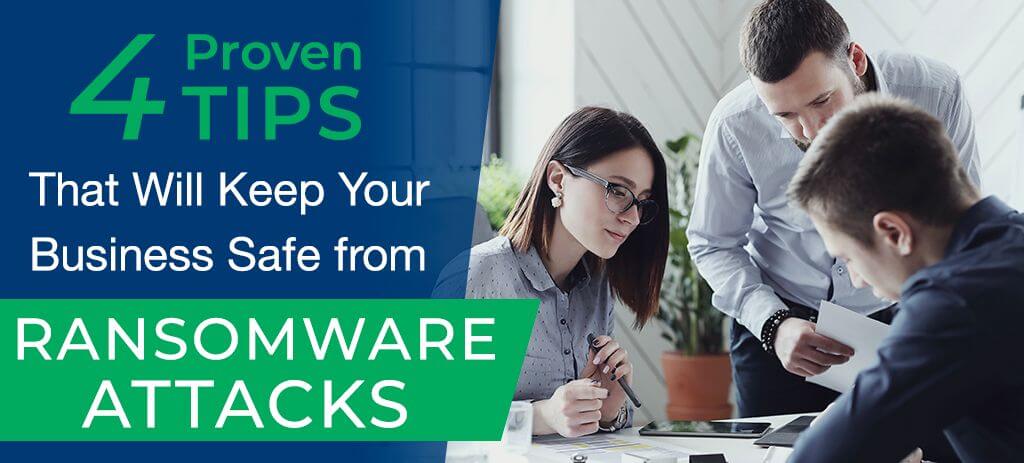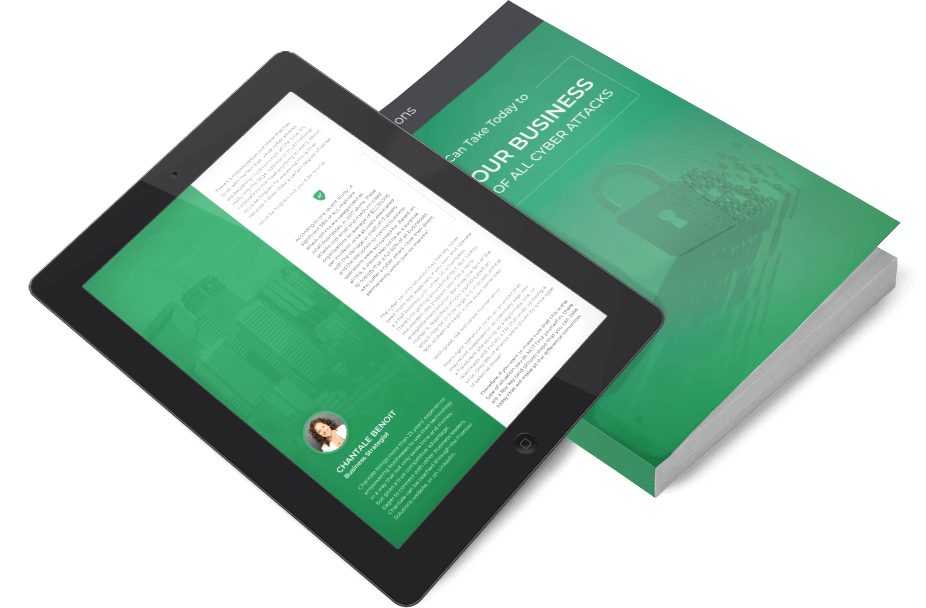
4 Proven Tips That Will Keep Your Business Safe from Ransomware Attacks
One of the most prevalent and also financially devastating cyber threats today is ransomware attacks. In this type of malware attack, cybercriminals usually lock or encrypt your data or computer network, and demand money for unlocking or decrypting it.
Cybersecurity experts have often dubbed ransomware as the fastest-growing type of cybercrime. The latest prediction is that global ransomware damage costs will reach $20 billion by 2021, which is 57X more than it was in 2015, and cybercriminals will be targeting a new business every 11 seconds by 2021.
A successful ransomware attack results in the actual ransom paid to the criminals, the loss of productivity and data, and the costs of forensic investigation, restoration, and replacement of the damaged system components. The worst part is, there is no guarantee that the attackers will give back all your data even after you’ve paid the ransom. In other words, such an attack could bankrupt your business.
That’s why prevention is the only way to fend off ransomware attacks.
Here’s how you can do it.
1. Monitor Your Entire Network
Network monitoring is the bedrock of your IT security management. The 24/7 monitoring helps you detect any irregularities in your web traffic, data, and application behavior that may point to a potential ransomware attack. The sooner you can detect these irregularities, the more quickly you can respond.
Another advantage of monitoring your network is that your systems and applications will always run with maximum efficiency. Make sure to create a network map that lists all your devices including computers, laptops, mobile devices, printers, scanners, and copiers, among others. You should also update this list as new devices are added to your network or old ones removed.
You can find several network monitoring tools in the market. Most of these tools are suitable for small and medium-sized networks. If your enterprise is too large or has a complex network, you may need highly customized monitoring solutions. Make sure to understand your network monitoring needs before choosing a solution.
2. Ensure Proactive Patch Management
Patch management involves keeping your software such as applications, operating systems, and antivirus, and firewall updated. Patch management ensures that the security vulnerabilities or bugs in your system are fixed before they turn into a gateway for a potential ransomware attack. It also makes sure your system runs smoothly and efficiently.
Most businesses have multiple devices and applications, making it necessary to create a patch management strategy. You should start by making a list of all software and hardware in your network. Next, set patch update priorities to your systems to ensure that the most critical ones get updated first and without fail. You can’t spend hours updating the wrong systems while the crucial ones remain exposed to cybersecurity threats.
Stay tuned with your vendors to know about the latest patch announcements. Most vendors will send you automatic updates. Just make sure you are registered to receive their security updates through a proper channel, be it email or instant messaging. Lastly, you should check each patch before applying it everywhere as patches can also cause system glitches or even failures.
3. Use Enhanced Authentication Protocols
Most companies now use cloud computing for storing their data and applications to allow their employees to work remotely. While this increases your productivity, it can also compromise your IT security if an unauthorized person gets access to your data or applications.
Enhanced authentication protocols such as two-factor authentication can help you add an extra layer of security to your on-site and off-site systems. Most e-commerce websites and companies often avoid using multifactor authentication as it is a little inconvenient. However, if you want to prevent destructive ransomware attacks, enhanced authentication is a must.
In two-factor authentication, you usually need your credentials and a One-Time Password (OTP) sent to a registered number or email. It can prevent unauthorized people from getting access to your system even if your credentials get leaked or hacked as they don’t have the OTP. Also, when the authorized person gets the OTP, they can immediately alert your IT security team about an unauthorized login attempt.
4. Get Robust Email Protection
Cybercriminals are always looking for new ways to attack. One of the most common ways is to send phishing emails and lure people into opening them. Once one of your employees opens a link or downloads an attachment from such an email, malware gets downloaded on your device or system, followed by a ransom demand.
One way to ensure no such emails end up in your employees’ inbox is to use content scanning and email filtering software. These tools help you filter emails comprising inappropriate language, images, and documents. You can also set filters that will prevent your employees from sharing logins, passwords, credit card details, social security numbers, or any other sensitive information.
Another way is to educate your employees. As hackers use creative attack tactics, they may eventually bypass your spam filters. For example, many phishing emails don’t have the actual malware, making it easier to bypass your IT security. But malware gets downloaded if the user opens the email link.
However, if your employees are well-trained to recognize a phishing email, your cybersecurity will increase considerably. Educate your employees to not open suspicious emails and alert your cybersecurity admin immediately if they receive any phishing emails. Also, ask your employees not to share their personal details or any sensitive office information over emails, especially with people outside your work environment. Implement these best practices strictly in your office so that everyone understands how important they are.
Wrap Up
Among the several different cybersecurity threats, ransomware is perhaps the most prevailing and destructive risk to your business. Fortunately, taking a few proactive IT security steps like the ones mentioned in this post can help you to reduce the risk of such an attack considerably. As a business owner, you should be aware of the devastating effects ransomware attacks can have on your business and be fully prepared to protect yourself. Hopefully, this post will prove helpful in doing so.

Chantale Benoit is the CEO of Frontier Solutions, a Calgary IT support company that has been helping small businesses get the most from IT in a way that allows it to drive their business forward for the past 23 years. Learn more about Chantale and Frontier Solutions here.
1 Comments
Leave a Comment
Protect Yourself from 90% of All Cyber Attacks

Download our guide to find our how you can protect yourself from 90% of all cyber attacks.

A motivating discussion is worth comment. I believe that you ought to write more on this topic, it may not be a taboo matter but generally people do not talk about such issues. To the next! All the best!!